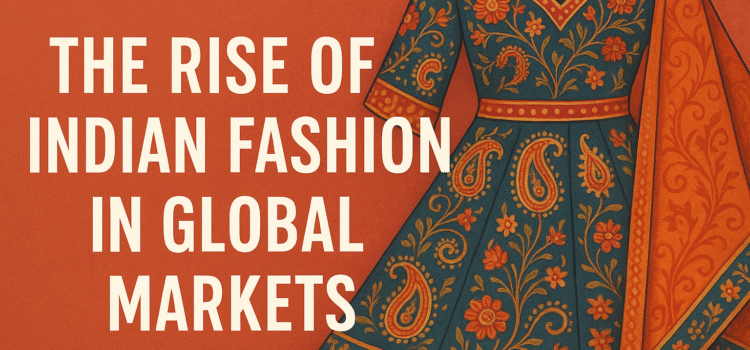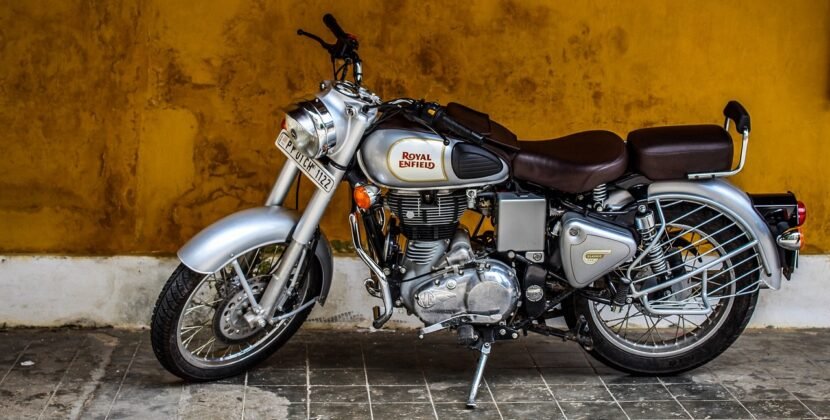Indian fashion has always been more than just the apparel that people wear—it is the reflection of the very culture, the living heritage, and the people’s collective self. Since then a few decades this opulent heritage has crossed the frontiers and is currently establishing its footprint in the international markets. Indian fashion is no longer just the closets of the diaspora; it has firmly made its way into the global closets of the fashion-conscious, be it through the luxurious Indian handwoven sarees or chic designer ensembles. The recognition that was once only accessible to the diaspora, is now being embraced and acknowledged in a mainstream level, with global celebrities, fashion weeks, and retailers getting inspired and influenced by the Indian style’s versatility.
1. A Blend of Tradition and Modernity
What sets Indian fashion apart from the rest of the world is the seamless integration of age-old Indian themes in contemporary ideas and aesthetics. Sari, kurta, lehenga, and sherwani are the evergreen staples of Indian fashion that contemporary designers continue to innovate and reinterpret endlessly. Besides, they offer a new range of garments that combine the Western style with Indian textiles, thus maintaining the equilibrium which is highly attractive to worldwide buyers. In other words, a blazer woven from Bansuri silks or a gown accessorized with traditional embroidery can be the look at both international fashion shows and fancy-dress events.
2. Rich Heritage and Craftsmanship
India boasts a rich heritage of handloom and handicraft that spans hundreds of traditions and goes back for several centuries. The country is known for the unmatched in detail of its embroidery, weaving, block printing, and dyeing. Today, consumers of global fashion are looking for more authenticity and artisanal Indian textiles instead of mass-produced fast fashion, which is exactly what these provide. The Indian garments are so attractive in the luxury fashion circles overseas because of the detail, the time, and the skill of the artists involved.
3. Influence of Indian Designers
The Indian designers have been instrumental in putting India’s fashion on the world map. Just to name a few, the designers Manish Arora, Sabyasachi Mukherjee, Anita Dongre, and Rahul Mishra have presented their collections at various international fashion weeks. Their lines neither promote Indian dresses literally nor do they copy them. Instead, they reform them to be acceptable to the global audience. For example, Sabyasachi’s bridal wear has been seen on stars worldwide, whereas Manish Arora’s vibrant and daring prints have attracted a lot of attention at Paris Fashion Week.
4. Bollywood’s Global Reach
Bollywood has been India’s soft power globally, shaping not only the entertainment industry but also the fashion trend. As Indian movies are being consumed by viewers from all over the world, the outfits of stars have garnered global attention. The vogue of Bollywood music and dance is also a major factor that helps ethnic garments, ornaments, and sundries to attain a worldwide fan base. Thus, weddings and cultural festivals held in different countries turn to Bollywood-inspired looks to show off Indian creations on the world stage.
5. Growth of E-commerce and Digital Platforms
The digital era has been a major turning point for Indian fashion. E-commerce sites and online marketplaces have turned the moves of international buyers into a simple means of purchasing Indian garments. Whether it is a luxury brand or a small-scale artisan, online platforms are the gateway to Indian collections for the whole world. Co-ord sets wholesale suppliers are even able to connect with international resellers, boutique owners, and fashion entrepreneurs through digital platforms, thus trendy Indian styles are not only available in every corner of the world but also in local communities by neighborhood stores.
6. Celebrity Endorsements and Red-Carpet Appearances
The moment international celebrities decide to don Indian fashion, it kind of becomes a trend that everyone wants to follow. Priyanka Chopra, Deepika Padukone, and Sonam Kapoor are some of the actresses that have been seen wearing Indian designers while attending various international red carpet events. In addition to that, the Tinseltown stars have also gotten in line and thrown their weight behind the embracing of Indian attire by wearing anything from gorgeous lehengas to stunning sarees thereby bringing the glamor of traditional Indian apparel to the limelight of the whole world.
7. Global Fashion Weeks and Collaborations
Increased numbers of Indian designers have been seen at international fashion weeks ranging from New York to Milan. These occasions are a window for Indian invention to an elite crowd of buyers, stylists, and fashion journalists. Moreover, Indian labels working with foreign fashion houses the jamming of the different styles becomes unique. The partnerships not only help to raise Indian designs but also make them discussed at the fashion mainstream all over the world.
8. The Rise of Sustainable Fashion
Environment-friendly fashion is hardly a buzzword now, but rather, it is a must for the industry of fashion today. Fashion consumers across the globe are currently more aware of the impact of their clothing purchases and they opt for sustainable, ethical, and eco-friendly fashion. Indian fashion, which is largely based on the use of the natural fabrics such as cotton, silk, and khadi, is also very much compatible with these values. The popularity of handloom weaves and organic dye among the international buyers is caused by their demand for a responsible fashion. This goes a long way to give Indian fashion the upper hand in the different world markets.
9. Diversity of Regional Styles
India is not just one culture – it is a very diverse land and this has been reflected in its fashion as well. The states and regions have their distinct dresses, for example, phulkari of Punjab and kanjeevaram of Tamil Nadu. Out of all, the Banarasi sari has grabbed the attention of the whole world. Actually, the increased demand of Banarasi saree wholesale markets is a way by which traditional weaves have gone beyond the borders and have become the first choice not only of the Indian diaspora but also global retailers who are the bearers of cultural heritage.
10. Festivals and Cultural Celebrations Abroad
Indian diaspora is instrumental in the promotion of Indian fashion abroad. Festivals like Diwali, Holi, and Navratri are now happening with great enthusiasm in the countries like the USA, UK, Canada, and Australia. These occasions necessitate the need for ethnic wear, jewelry, and accessories, thus leading to the rise of Indian fashion’s visibility. People living in different countries of the world become acquainted with the wear of India through such events which in turn leads to their worldwide accepting of it.
11. Accessibility Through Customization
Indian fashion would not have climbed up the global ladder without one more reason behind its rise, which is the adaptability of its designs. A lot of international buyers highly opt for custom sizes, color palettes, or even fusion versions of traditional outfits. Indian designers and wholesalers meet these requirements and offer flexibility that is rarely found in Western fast-fashion brands. Such a customer-friendly approach has made Indian clothing a preferred choice in global retail chains.
12. Social Media and Influencer Culture
Without a doubt, social media has turned into one of the most potent weapons in the global fashion war. Indian influencers and global creators are constantly promoting Indian outfits, jewelry, and styling ideas. The contribution of Instagram reels, Pinterest boards, and YouTube fashion vlogs to the Indian looks mainstream is enormous. The capture of intricate embroidery, colorful fabrics, and detailed accessories is what makes Indian fashion thrive on the internet, thus, creating demand and spreading it at different parts of the world.
13. Affordable Luxury
Indian fashion manages to be very reasonable and at the same time luxurious. A silk saree made by hand or a highly embellished lehenga can be quite costly in India, but if we compare it with the luxury fashion around the world, it is much more economical. Such a position has attracted buyers from all over the world who want unique and exclusive designs but at reasonable prices. Thus, Indian fashion is a mixture of consumers, including those who are very careful with their budget and those who are looking for luxury.
14. Future Prospects of Indian Fashion in Global Markets
Indian fashion will be further developed in foreign markets due to its global recognition. The Indian fashion industry is sustainable, digitally connected, and made with great craftsmanship, which ensures its success in the long run. There will be more Indian brands going abroad to open their own stores, doing more collaborations with global designers, and participating more in international trade fairs. Not only will the focus be on ethnic wear but also on fusion wear, athleisure, and even accessories inspired by Indian culture.
Indian fashion’s ascent in worldwide markets is a story that mixes the past, the heritage, and the contemporary innovations. The sequined suits of the remote villages are now the talk of the global fashion weeks, and Indian style has become the most sought-after fashion in the world. Indian clothing will be the talk of the international fashion world forever, thanks to online platforms, the influence of celebrities, and the increasing global consciousness of eco-friendly fashion. The fashion that was mostly used for Indian festivals and weddings is now being embraced by people all over the world, thus making Indian fashion a global phenomenon.













